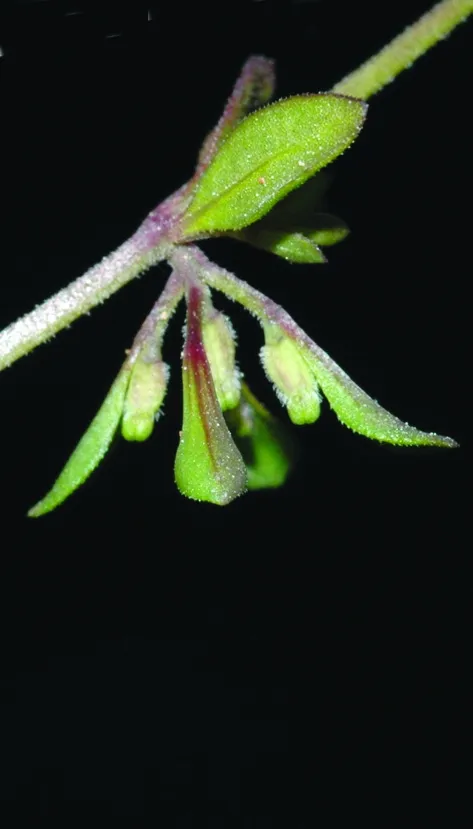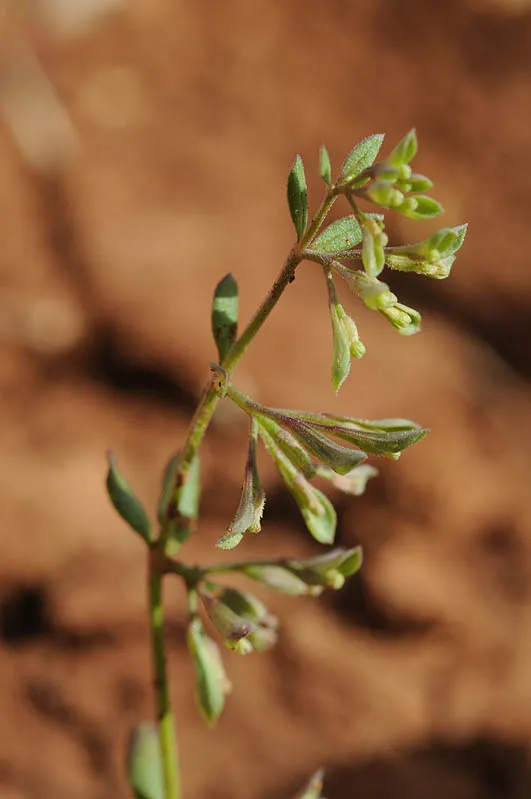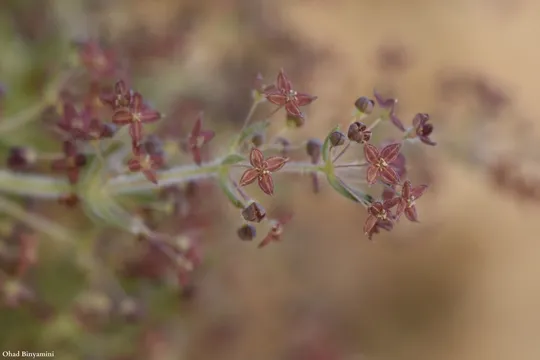Factorovsky's Callipeltis
Callipeltis factorovskyi


Callipeltis
factorovskyi was once common
in Israel, but has now become very rare, growing in only four regions: the southern Golan
Heights, Judean Mountains, Samarian Mountains, Samarian transition zone
and in Samaria. In the Samarian transition
zone, it was
collected three
times along the Alon Road, at Rimonim, Ma’ale Mikhmas and Ma'ale Efraim, between 1982 and 1986.
Efforts to find this species in the 1990s were unsuccessful. In Samaria, it was collected only twice, at Dir Am ar (1951) and in Ǧinsafut near Nablus (1977). The plant was not found in northern Israel during the rare plant survey (1989-1996). Following intensive efforts, it was finally found in Wadi Metsar in the southern Golan Heights in 1996. This population remained stable through 1997-2003. According to Danin (2004) it also grows in the
Upper Galilee.
C. factorovskyi is extinct in six regions from which it had previously
been collected from 1924 to 1951: Tel Sokho in the Judean Lowlands, near Gezer in the Philistian Plain, in the Judean Mountains (a number of
collections, mostly in Jerusalem), Bet Zera
in the upper Jordan Valley, Tivon in the Lower Galilee and the Jezreel Valley. The plant was first found in the
Jezreel Valley (from where it was
first described), and indeed this region had the
largest number of sites from 1924 to 1931. The last evidence of the plant’s
existence in
the Jezreel Valley is from 1951, after which it disappeared from the valley. Efforts to find it again during the rare plant survey in 1995-1996 were also
unsuccessful. On Mount Hermon it was observed in the montane forest at an
altitude of 1,450 meters. In 2005, Oz Golan collected the C. factorovskyi in
Wadi Zano'ah near Mata.
Among herbaceous vegetation, in scrubland and field
edges on heavy soil in the transition zone and in marginal areas in the
Mediterranean region.
Warburgina is a monotypic genus, which was discovered in the Jezreel Valley and was described in
1927 by Eig. He named the genus for Professor Warburg, the founder of the Botany Department at the Hebrew University, and the species in honor of his close friend Eliezer Factorovsky. This was
the first genus described in Israel by an Israeli botanist, and for many years the genus was considered endemic to Israel. Subsequently, the species was found to grow in Syria and northern Iraq. The genus is very close to the genus
Callipeltis, differing from it mainly in its seed, which is composed of two mericarps
(Callipeltis has one) and the bracts accompanying the fruit that are narrow and greenish (whereas in Callipeltis they are broad and yellowish). In 1964, the world expert on the
Rubiaceae family, merged the genera Warburgina and Callipeltis, but Feinbrun (1978) did not accept this decision,
leaving it as an independent
genus.
•
Since the discovery of Callipeltis factorovskyi in 1927, the species extinction process
proceeded rapidly: it is completely extinct from 6 regions where
it had been previously known. Its
extinction from the Jezreel Valley is particularly noticeable, as this is the
area from which the species was first described, and where it was common in the 20th century. Of 22 sites known, only five remained between 1977 and 1987, and since 2000 the plant grows
with certainty at only one site, in Wadi
Metsar in the Golan.
•
In 1996 the population size at the Wadi
Metsar site was 50 specimens
in an area of about a quarter of an acre.
• None of the
sites are
located in a nature reserve.
A survey to locate Callipeltis
factorovskyi should be conducted in the regions
from which it had been previously reported. A special effort
has to be made, since the identification of this species is very difficult. C. Factorovskyi should be reintroduced to a specially allocated site in the Jezreel Valley. The Wadi Metsar population
of should be monitored and pesticide spraying in the area should
be prevented.
Callipeltis
factorovskyi grows in the Fertile Crescent area: in Israel, Jordan,
Lebanon, Syria (from
the Syrian Desert up to Ǧebel Druz in the south) and northwest Iraq. The species is not
found in
Turkey and in Iran. In Jordan, it is
common in Gil'ad and Ammon and in Edom.
Callipeltis factorovskyi is a minute annual
plant that is difficult to detect, but whose preservation is very
important. It is a sub-endemic species, most of whose sites were destroyed in the last sixty
years. C. factorovskyi is one of only two plant genera described and defined by an Israeli botanist
and they are both sub-endemic to Israel and threatened
by extinction (the
second genus is Mosheovia).
Eig, A. 1927. Warburgina factorovskyi Sp.Nov., Bull. Inst. Agr. Nat.Hist. Tel-v 6, 33.
Current Occupancy Map
| 1000 squre meter pixel | 5000 squre meter pixel | 10000 squre meter pixel | |
|---|---|---|---|
| number of observations | 0 | 0 | 0 |
| in total pixels | 0 | 0 | 0 |
| Family | Rubiaceae |
| Classification | On the endangered species list |
| Ecosystem | Semi-Steppe, Mediterranean |
| Chorotype | Eastern Mediterranean (Western Irano-Turanian) |
| Conservation Site | Wadi Metsar in the Golan |
| Rarity |
1
3
6
|
|---|---|
| Vulnerability |
0
3
4
|
| Attractiveness |
0
0
4
|
| Endemism |
0
2
4
|
| Red number |
1
4.7
10
|
| Peripherality | N |
| IUCN category | DD EW EX LC CR EN VU NT |
| Threat Definition according to the red book | Endangered |
 Based on:
Based on:






